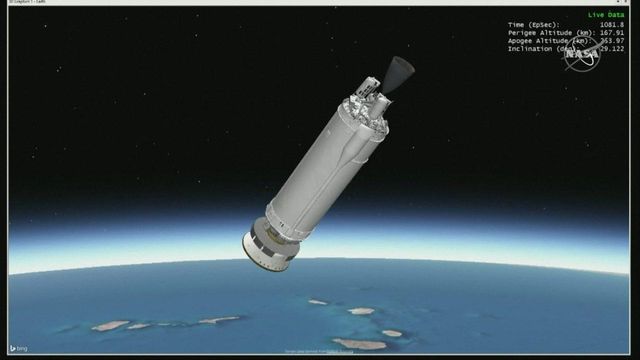Perseverance rover starts 309 million mile trip to Mars
The Perseverance rover launched Thursday at 7:50 a.m. ET from Cape Canaveral, Florida. NASA is going back to Mars with an SUV-sized rover with the Mars 2020 mission.
Posted — UpdatedThe Perseverance rover launched Thursday at 7:50 a.m. ET from Cape Canaveral, Florida.
After liftoff, "Persy" will begin a 309-million-mile trip to Mars with landing set for February, 18, 2021.
About the mission
The Perseverance rover is based on the same 9-foot-long, 9.5-foot-wide and more than 7-foot-tall design as the Curiosity rover, which has been exploring Mars' Gale Crater since August 2012.
Think of Perseverance as Curiosity 2.0. Perseverance adds another 300+ pounds of upgraded and additional instruments.
Curiosity had 17 cameras topping out at two megapixels while Persy is equipped with 23 cameras, including a 20-megapixel color camera. Also on board are a pair of microphones to record the sounds of Mars during landing and later on the surface.
- Mastcam-Z is an advanced camera system with panoramic and stereoscopic imaging capability and the ability to zoom. It will also assist with rover operations and determining the minerals that make up the Martian surface.
- SuperCam can detect the presence of organic compounds in rocks and soil from a distance.
- PIXL (Planetary Instrument for X-ray Lithochemistry) enables scientists more detailed detection and analysis of chemical elements from rock samples than ever before.
- SHERLOC (Scanning Habitable Environments with Raman & Luminescence for Organics and Chemicals) uses an ultraviolet (UV) laser to determine fine-scale mineralogy and detect organic compounds and includes a high-resolution color camera for microscopic imaging of Mars' surface. SHERLOC will also study over time 5 small pieces of spacesuit material and a piece of helmet visor to better understand their resilience in the harsh environment.
- MOXIE (The Mars Oxygen ISRU Experiment) will turn the carbon dioxide in the Martian atmosphere in oxygen, an important first step to enabling humans to live on Mars.
- MEDA (Mars Environmental Dynamics Analyzer) is an upgrade of Curiosity's weather stations which will provide measurements of temperature, wind speed and direction, pressure, relative humidity, and dust size and shape. Look for Perseverance's weather reports to be added to those coming from Curiosity and Insight on the @MarsWXReport twitter feed early next year.
- RIMFAX (The Radar Imager for Mars' Subsurface Experiment) provides a ground-penetrating radar that will provide centimeter-scale resolution of the geologic structure of the subsurface.
The rover will also deliver Ingenuity, a technology experiment and the first aircraft to attempt controlled flight on another planet, attached to the belly of NASA's Perseverance rover. Perseverance will deploy Ingenuity onto the surface of Mars, and Ingenuity is expected to attempt its first flight test in spring 2021.
While the physics work the same, flying on Mars is challenging. Generating lift in the thin atmosphere, about 1% that of Earth's, required engineers to come up with a unique design.
A pair of 4-feet-wide counter rotating blades spin at about 2,400 RPM to lift the 4-pound drone. Onboard computers, navigation sensors and two cameras (one color and one black-and-white) communicate back to the rover wirelessly.
The solar-powered drone will be used for short hops, up to 90 seconds at a time, about 10-15 feet off the ground, to scout ahead for possible science targets for its big sister rover, recharging between flights.
Related Topics
• Credits
Copyright 2024 by WRAL.com and the Associated Press. All rights reserved. This material may not be published, broadcast, rewritten or redistributed.






